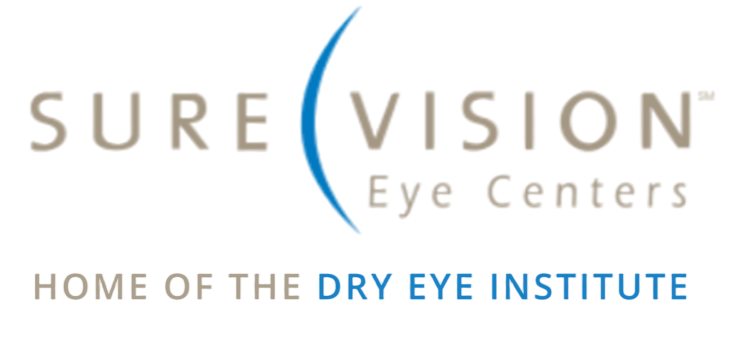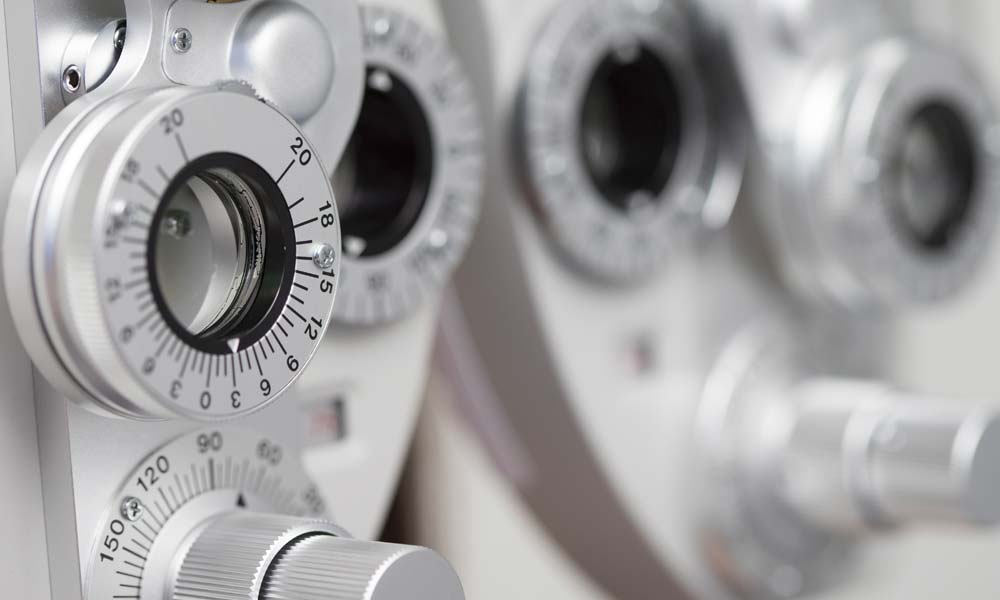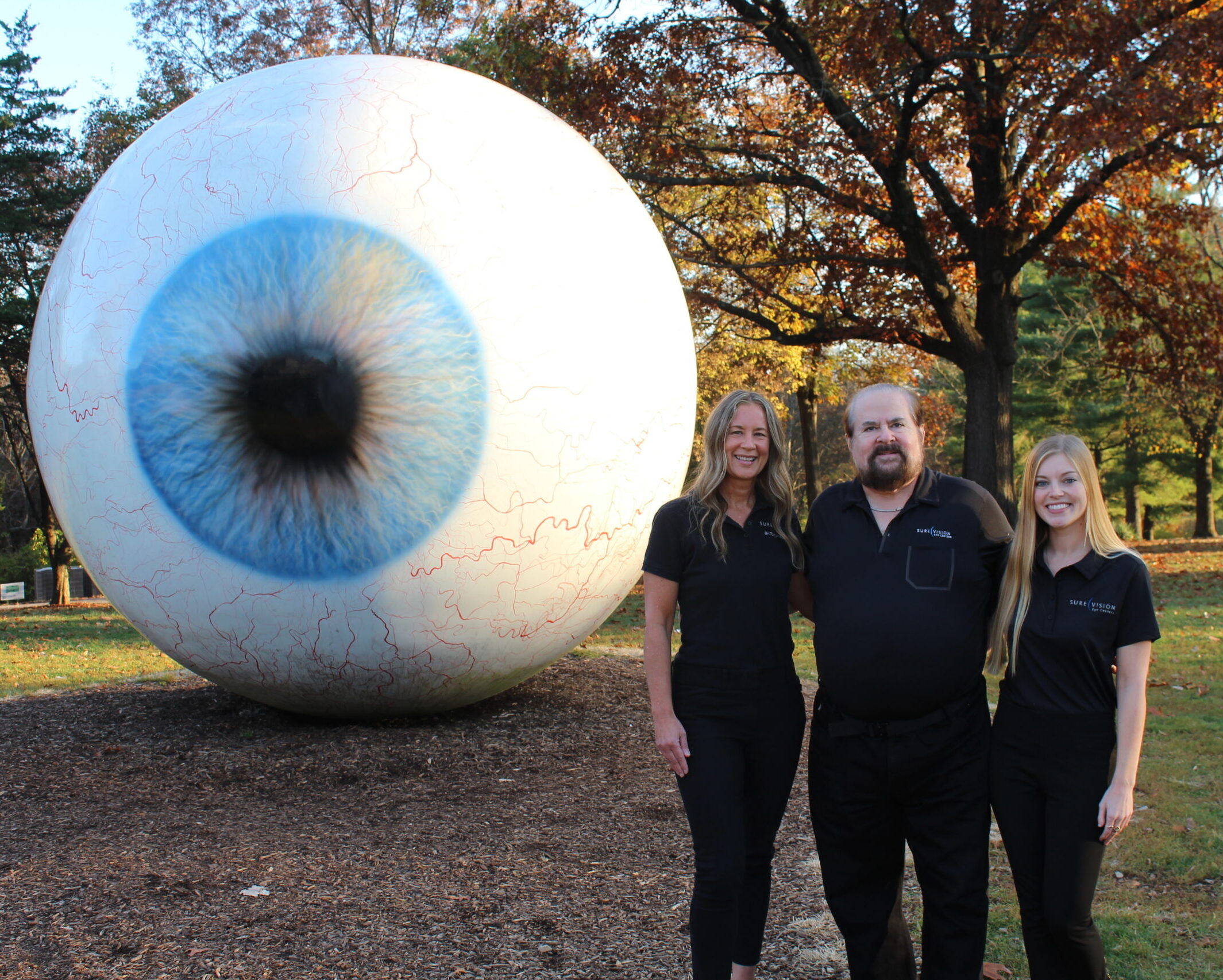SureVision Eye Centers is Home to the Dry Eye Institute
What is Dry Eye Disease?
Dry Eye Disease affects the moisture and lubrication on your eyes’ surface, impacting one out of seven adults over the age of 21 in the United States. Our eyes depend on tears for comfort and health, requiring both the right amount and quality of moisture to function properly. When your tears don’t provide adequate moisture or lubrication, it leads to Dry Eye Disease (DED) – a chronic condition that can significantly impact your daily life.
At SureVision Eye Centers’ Dry Eye Institute, we combine advanced diagnostic equipment with specialized expertise to provide comprehensive care. Our specialists deliver targeted treatments based on thorough testing. Learn more about your treatment options in Creve Coeur, MO.
What Causes Dry Eye?
Our tear film is made up of three unique layers. Each layer of your tear film must be present and work properly for your eye to remain moisturized and lubricated. Dry eye occurs in one or multiple ways, including:
- Inadequate amount of tears.This can be due to a decrease in the production of tears or an increase in the rate of evaporation of the tears. In this condition, your eye lacks adequate moisture.
- Poor quality tears. Even when you have optimal tear production, a lack of lubrication from the tears you have can also lead to symptoms of dry eye. This is even more troublesome when you have roughness on the surface of your eyes from scars, allergy problems, or exposure to dust, dirt, or other irritants in your environment.
Who is at Risk for Dry Eye?
Many risk factors can cause dry eye disease. These include:
- Advanced Age. Dry eye increases with age.
- Gender. Women are more likely to suffer from symptoms of dry eye disease than men.
- Systemic disease. Diabetes, rheumatoid arthritis, Sjogren’s syndrome, systemic lupus erythematosus, and thyroid eye disease can all lead to dry eye.
- Medications. Dry eye can be a side effect of some high blood pressure medications, antidepressants, antihistamines and decongestants, diuretics, cholesterol-lowering drugs, oral contraceptives, pain relievers, dermatological medications (Accutane), antipsychotic medications, and gastrointestinal medications.
- Environmental conditions. Dry or dusty environments, smoke-filled areas, high altitudes, windy or hot conditions, along with ceiling fans and dehumidifiers, can all make your symptoms worse.
- Contact lens wear. Contacts often need more lubrication and moisture to carry oxygen to your cornea.
- Decreased blink rate. This can occur due to certain diseases, extended reading, extended computer use, or when watching TV.
- Hormones. This can be a particular problem for women after menopause.
- Eye surgeries, especially LASIK.
- Inflammation and eye conditions. Inflammation of the eyelids (blepharitis) and ocular surface can cause dry eye disease.
How is Dry Eye Diagnosed?
While your eye care professional can diagnose dry eye disease, diagnosing the specific cause requires specialized equipment and detailed analysis that many general eye doctors cannot provide. Most patients simply receive basic instructions to use artificial tears, without understanding why they need them, how frequently to use them, or which prescription drops would work best for their unique situation.
At our center, we take a comprehensive approach. Through a combination of thorough questionnaires, detailed eye exams, and advanced diagnostic testing, we identify the root causes of your condition. This allows us to develop a personalized treatment plan that addresses your specific needs and provides lasting relief here in Creve Coeur.
How is Dry Eye Treated?
Lubricating eye drops are the second most common medical treatment in the USA, second only to analgesics like acetaminophen, aspirin, or ibuprofen. Because there are so many factors causing dry eye disease, there is a wide range of treatment options. A treatment that may work well for one person may not be the best for you, depending on the specific cause of your dry eye problem.
Options include:
- Artificial tear drops: These come in many different formulations and levels of treatment, so follow a doctor’s recommendations on what to use.
- Lid scrubs: These remove scales and flakes from the eyelid that can cause irritation.
- Warm compresses: These help remove wax deposits from meibomian glands and tear ducts.
- Punctal plugs: These close the drain to prevent loss of tears.
- Topical steroid drops: Reduce inflammation.
- Restasis/Xiidra drops: These treat medical conditions with the glands that produce tears.
- Fish oil/omega-3 fatty acid tablets: Add nutritional support for tear glands.
- Avoiding causative environments: Including ceiling fans, dehumidifiers, and smoky or dusty areas.
- Taking breaks and remembering to blink during prolonged screen activity
Dry Eye Treatment: Prognosis & Outcome
Dry eye affects one in seven adults and occurs when the eyes lack adequate moisture and lubrication. Symptoms of dry eyes include stinging, burning, eye fatigue, and blurred vision. SureVision Eye Centers is home to the Dry Eye Institute, where we offer tailored treatments based on detailed testing and diagnosis to address your needs.
Our specialists from the Dry Eye Institute will assess your condition and provide tailored treatment recommendations. Benefit from our early access to cutting-edge medications and treatments through our collaborations with manufacturers. Contact our ophthalmologists today.
Address: 12101 Woodcrest Executive Dr Suite 150 B, St. Louis, MO 63141
Phone: (314) 292-8088
Come in today and let us determine a treatment that is best for you!
Frequently Asked Questions
Q: How long does it take to see improvement with treatment?
Every patient responds differently to treatment. Some patients experience relief within days, while others may need several weeks to notice significant improvement. Your doctor will monitor your progress and adjust your treatment plan as needed.
Q: Can I wear contact lenses with dry eye?
While contact lens wear can contribute to dry eye symptoms, many patients can still wear contacts with proper management. Your doctor may recommend specific contact lens types or wearing schedules, along with specialized lubricating drops designed for contact lens wearers.
Q: Is dry eye disease permanent?
Dry eye is typically a chronic condition, but it can be effectively managed with proper treatment. While there may not be a permanent cure, following your prescribed treatment plan can significantly reduce symptoms and improve your quality of life.
Q: Will insurance cover my treatment?
Insurance coverage depends on your provider and the required treatment. Many insurance plans cover medical visits and some prescription medications. Our office staff can help verify your coverage and discuss payment options.
Q: Can lifestyle changes help my dry eye symptoms?
Yes! Simple changes like taking regular breaks from screen time, staying hydrated, using a humidifier, and protecting your eyes from wind and smoke can significantly improve symptoms. Your doctor will recommend specific lifestyle modifications based on your situation.
At SureVision Eye Centers,
Vision Like You’ve Never Seen Before™
The surgeons and doctors at SureVision Eye Centers are among the most experienced and well-trained in the world. Each year, they perform thousands of surgical and vision correction procedures. At SureVision Eye Centers, we believe everyone should have a lifetime of their best possible vision.


